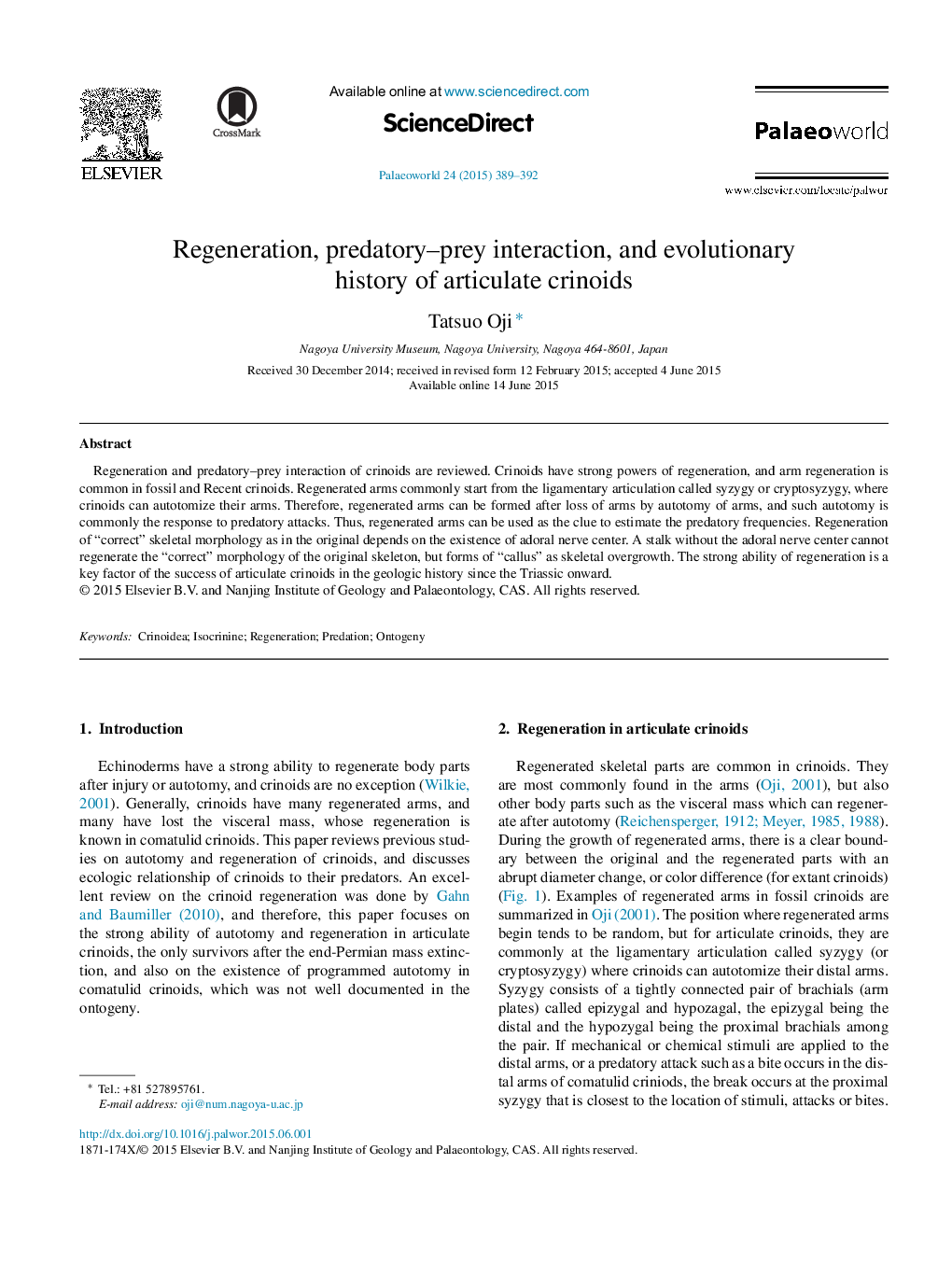| Article ID | Journal | Published Year | Pages | File Type |
|---|---|---|---|---|
| 4749702 | Palaeoworld | 2015 | 4 Pages |
Regeneration and predatory–prey interaction of crinoids are reviewed. Crinoids have strong powers of regeneration, and arm regeneration is common in fossil and Recent crinoids. Regenerated arms commonly start from the ligamentary articulation called syzygy or cryptosyzygy, where crinoids can autotomize their arms. Therefore, regenerated arms can be formed after loss of arms by autotomy of arms, and such autotomy is commonly the response to predatory attacks. Thus, regenerated arms can be used as the clue to estimate the predatory frequencies. Regeneration of “correct” skeletal morphology as in the original depends on the existence of adoral nerve center. A stalk without the adoral nerve center cannot regenerate the “correct” morphology of the original skeleton, but forms of “callus” as skeletal overgrowth. The strong ability of regeneration is a key factor of the success of articulate crinoids in the geologic history since the Triassic onward.
